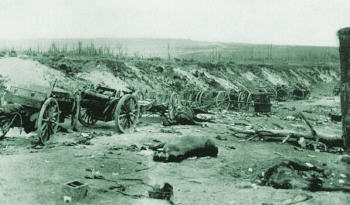The Story of the American Expeditionary Forces |
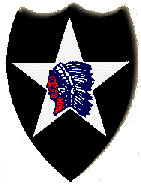
|
FORGOTTEN VICTORY
|
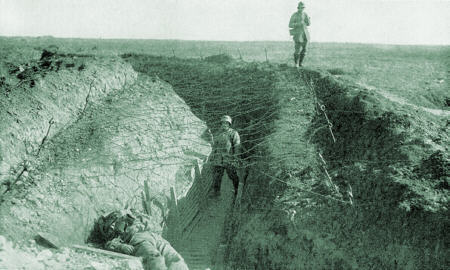
Atop Blanc Mont
German Forces Command the Surrounding Champagne

|
Quick Facts
Phase I OperationsBackgroundThe AEF at Blanc Mont by Website Editor Mike Hanlon:The first time I went looking for Blanc Mont Ridge I drove right past it. This was with a Michelin map in hand that had been clearly marked by my hosts in nearby Vouziers. I guess my Californian's sense of scale just prevented me from believing that the little nub on the right side of the road deserved any geographic designation at all let alone one suggestive of Europe's most famous mountain. After doubling back and parking by the limestone tower monument that marks the center of the old German line, though, I saw things more clearly. There can be no mystery why tens of thousands of Frenchmen had died attempting to gain this position during the Great War. Blanc Mont ridge from atop is, undoubtedly, the summit of the rolling Champagne, the greatest killing ground of the French Army in the First World War. You can look down across the entire region, from Reims Cathedral in the west to the Argonne Forest in the east. In front, the old no-mans-land is a 2-kilometer long dropping slope where no attacker could expect to hide from either machine gunners or artillery spotters.  German Artillery in the Sector was Highly EffectiveBut by the end of September 1918, the time had come for a grand roll-back; it was time for the Allies to regain occupied France and Flanders. The German Army was suffering regular defeats and had sunk to conscripting the too-young and too-old into service. In the northwest of the Western Front, the British, bolstered by Canadian and ANZAC divisions, and with the small Belgian Army on their flank, were on the attack; while to the East, the new First Army of the Yanks was advancing in fits and starts towards Sedan. The French Army in the center of the Western Front, however, needed to match the advances of her allies on either side. In the Champagne, this meant crashing through Blanc Mont. Considering what four years of attritional warfare, 1916's Pyrrhic bloodletting victory at Verdun and the mutinies of 1917 had done to the spirit of the individual Poilu, the French infantryman, this was simply an unrealistic expectation. In three days of trying, the French Army once again failed to push their adversary off of his stronghold. What was needed for this mission were fresh, vigorous assault troops. That is to say, the high command had to find some soldiers who would march up that long slope to Blanc Mont without paying too much attention to their buddies alongside being machine-gunned down or mutilated by whiz-bangs. Then the surviving troops would have to possess the energy and will to hold onto the crest no matter what furies the German Army threw back at them. The answer, it was decided, was to commit some American divisions. The mission to take Blanc Mont ridge was given to the experienced Doughboys and Marines of the AEF's Second Division and--in reserve--the unblooded Texas and Oklahoma National Guardsmen of the Thirty-Six Division -- 54,000 men total. They were placed at the disposal of French Fourth Army Commander Henri Gouraud, one-armed hero of both the Gallipoli campaign and the recent defense along the Marne.  Young Marines Who Fought at Blanc MontPart of the Thirty-Sixth Division had to move into the line to fill in the gaps and support a precarious position some Leathernecks had nicknamed "The Box". Units from both divisions collaborated on October 7th and 8th in capturing the machine gun filled strongpoint of St. Etienne, a village almost two miles northwest of Blanc Mont. This proved to be the decisive blow. The battered Second Division was sent to the rear to rest and regroup. The boys from the Southwest gathered themselves then executed a wild open field dash of thirteen miles, all the way to the River Aisne. By the 13th of the month the river line had stabilized and both American divisions were earmarked for redeployment back with Pershing's forces. What transpired around Blanc Mont in October 1918 was a vicious battle that cost America over 7,800 men, killed and wounded. Marshal Petain (then still a hero) called what happened there the greatest single achievement of the 1918 campaign. Curiously, the Battle for Blanc Mont Ridge has slipped off of History's radar screen, appearing only in official documents and memoirs of the participants. It has become the forgotten victory of the AEF. That limestone tower on the ridge, built to honor the Doughboys, might be the least visited monument on the Western Front. Hardly an American knows it exists. MH Preparations and PlanningOn October 1, 1918, orders were received from Headquarters, IVth French Army, assigning the Second Division to the 21st Corps [French]. That Corps moved toward the front and, on the night of October 1-2 relieved the 61st Division [French] in the front line. The Second Division's Fourth Brigade took over the trenches occupied by the 61st Division [French] and the right battalion of the 21st Division [French] of the 11th Corps [French]...The Third Brigade went into a covered position in reserve south of the Butte de Souain-Navarin Farm Ridge. [Later moved into the line to the east.] The 2nd Field Artillery Brigade moved up into position in the sector to support an attack on the Massif of Blanc Mont Ridge which was contemplated on the morning of October 2 but postponed until the 3rd. The day was spent in cleaning up Trench d'Essen, which was still occupied by the Germans [to the west].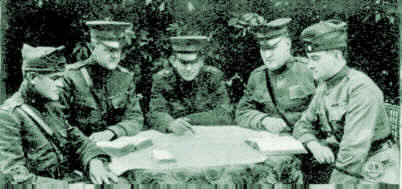 MG John A. Legeune and the Staff of the Second Division
Opening Assault: October 3, 1918; 0550hrs.In his Marine Corps classic, Fix Bayonets!, John Thomason describes what he witnessed that morning at zero hour:
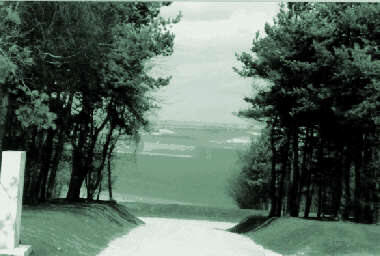 View from Former German Position TodayOn Blanc Mont, a German observer, Lieutenant Richert, kept the division commander informed of the progress of events, which was very favorable in the front lines but most unsatisfactory on Blanc Mont. At 8.15 he reported that the Americans were on the hill -- from the dugout he could hear their voices; his division commander, in reply, ordered use of all available reserves to check the American advance…The Americans, at 8.30 were coming closer; they found and captured some of the headquarters detachment. So far, [reported Richert] their force seemed to be only about a battalion. The division commander ordered that an attempt be made to find infantry units which had been placed in his area, and to organize a counterattack with it… At nine o'clock things looked a bit better; the Americans were mostly along the road; and had left only weak outposts on the hill. But at 9.20 the telephone operator called out that the Americans had found the dugout and were demanding surrender; then the line went out. Lt. Richert and his entire post were captured. ...The Second Division consolidated the position gained, and began moving artillery forward. One battalion from each American light regiment moved at 9.30 to position north of Somme-Py; the rear battalions followed as soon as these were in position ...The Blanc Mont-Médéah [Farm] line had been assigned as a first objective; the original corps order had called for exploitation, and the division attack order had notified the brigade to be ready for further advance. This further advance was made late in the afternoon. The 23d Infantry passed through the lines of the 9th, and pushed forward in column of battalions. The 9th followed in support. Similarly, in the 4th Brigade, the 5th Marines passed through the 6th and took the lead. But neither [French Division], the 167th Division, on the right, nor the 21st, on the left, made any progress, and the Americans received fire from both flanks, besides powerful artillery fire from the front. ...The farthest advance was in the center, where the 23d Infantry, bearing a little to the left of its proper direction, gained something over a mile. The only enemy now facing the regiment was the remnant of the 15th Bavarian Division, which had come out of the line at Orfeuil, exhausted, the day before, and was now thrown into the line in desperation… But fire [by the Americans] from both their flanks made any further advance impossible. Two battalions of the 9th came up on the right, covered that flank, and connected with the French at Médéah Farm. 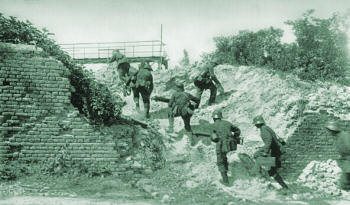 German Soldiers Rush to their Posts at Blanc MontThe situation the night of October 3-4 was precarious --- the division held a salient a mile and a half deep, a mile wide at the base and only 500 yards wide for the last half mile. October 4th...The Second Division ordered preparation for an advance beyond St. Étienne, but the time for this attack was not fixed. It was out of the question to push the salient any deeper; it was necessary to wait for the divisions on the flanks to come up. In the course of the morning, however, the 5th Marines continued the advance initiated the evening before, and succeeded in occupying the ridge a mile southeast of St. Étienne, suffering severely from flank fire. … This somewhat relieved the pressure upon the 23d Infantry, but brought the Marines into an even more precarious position. In the afternoon the attack was continued, but such gains as were made could not be held.On the eastern flank of the salient, the 3d Brigade had been actively engaged all the morning…Fragments of the 15th Bavarian Division, made a dashing attack upon it about 6.00 am which at first gained some ground but was finally repulsed. The 2d Battalion, 9th Infantry (Lieutenant Colonel Arnold) bore the brunt of this attack. About noon, reports as to the progress of the divisions on the right and left were encouraging, and 2.30 P.M. was fixed as the hour for the attack ordered in the morning. The 3d Brigade attempted an advance, the 23d Infantry leading, with the 9th in support. Starting from a narrow salient, this attack had both flanks in the air; it was soon brought to a standstill, and the brigade commander ordered the troops to fall back to their original position October 5th-6th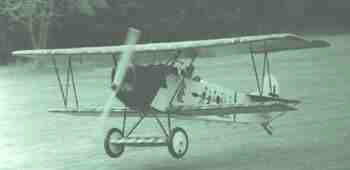 The German Air Service Maintained Air Superiority Over Blanc Mont...The summary of the operations for October 5th, prepared at headquarters of the German Third Army reads in part: "On October 5th the enemy again attacked the Py and Perthes Groups, west [south?] of the Aisne; after powerful artillery preparation. His attacks, made in great force, were broken up by the stubborn resistance of our infantry, well supported by the artillery. The enemy's losses were heavy ..." During the night of October 5-6, arrangements were made to clean up the machine gun nests which were holding the Americans…The artillery fire included an hour's bombardment of the enemy's line and immediate rear areas, commencing at 5:30 A.M., October 6th, and a rolling barrage. The advance was made and the St. Étienne--Orfeuil road was reached, ultimately, but not without hard fighting; nearly all the 23d Infantry became engaged, and parts of the 9th. Numerous messages were received from the French that they had taken St. Étienne, and wanted to turn it over to the Americans, in whose territory it lay; but these reports were highly optimistic, for while French elements had entered the town it was not yet cleared of Germans ...At this time help was called in to reinforce the decimated Second Division and for the capture of St. Etienne. The 71st Brigade of the Thirty-Sixth Division was ordered to the front and temporarily placed under the command of General Lejeune . An Up-Close View of the First Phase of the BattleFifth Regiment Marine, PFC Clarence Richmond Described the Action on the First Days of the Assault in his Diary:
|
|
Sources and thanks: See Part II for a consolidated list of contributions. MH |
To find other Doughboy Features visit our |
Membership Information  Click on Icon |
For further information on the events of 1914-1918
visit the homepage of |
Michael E. Hanlon (medwardh@hotmail.com) regarding content,
or toMike Iavarone (mikei01@execpc.com) regarding form and function.
Original artwork & copy; © 1998-2000, The Great War Society
